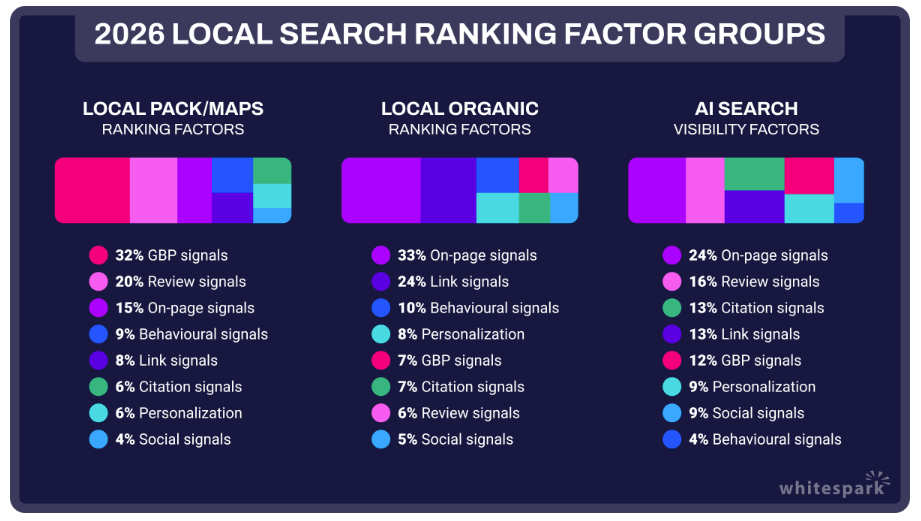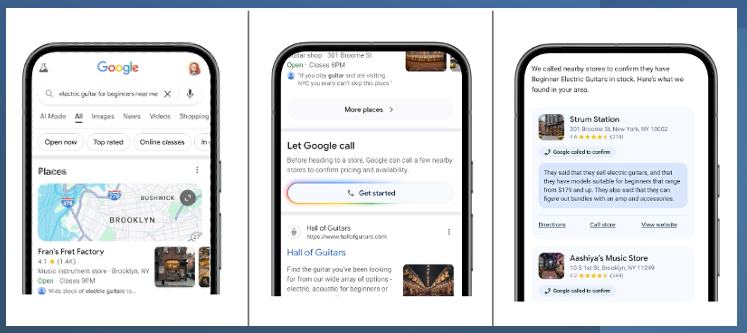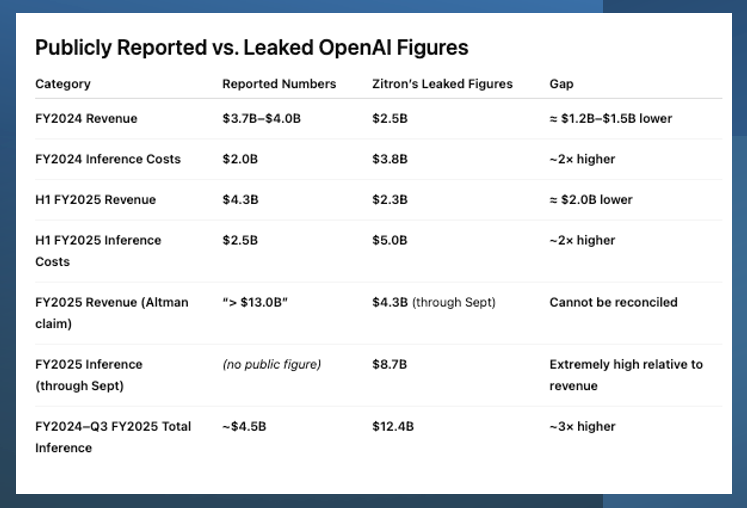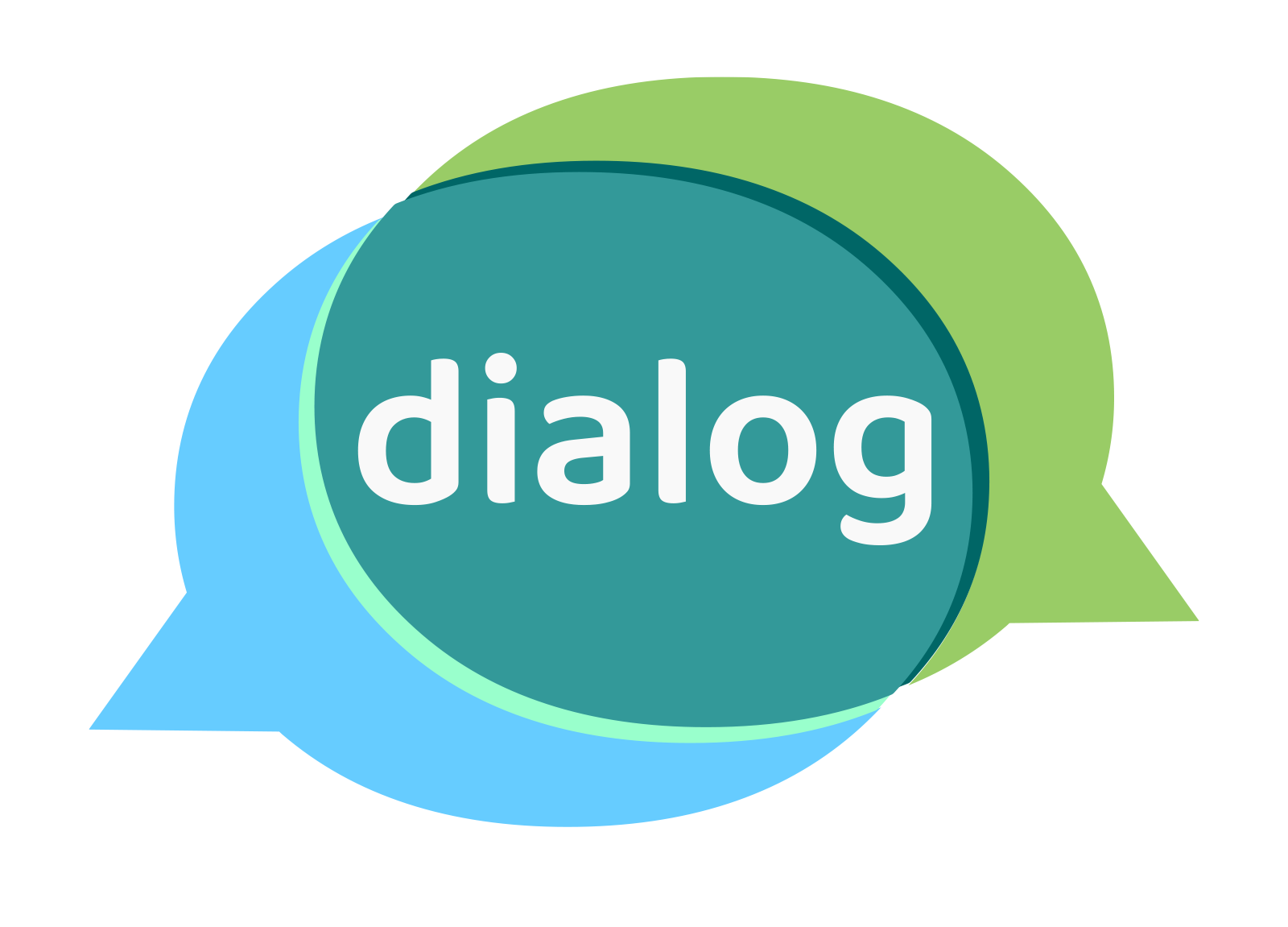Ranking Factors, Let Google Call, OpenAI Spending, AI Visibility, Trade School

Local Ranking Factors: AI Edition
This year, the annual Local Search Ranking Factors survey contains an important new AI visibility section. The report, which is a lengthy opinion survey of 47 local SEO experts, was first introduced 17 years ago. Since then it has grown into a widely recognized and highly respected industry resource. Traditional Local SEO has historically focused on website authority, links and citations, but especially Google Business Profile elements. There's an ongoing debate about how different Local SEO and AI optimization are. Many SEOs argue that if you follow SEO best practices you'll be fine in AI search. That's probably about 85% accurate. While similar elements and tactics exist for both (e.g., review importance), there's a different hierarchy or emphasis in each. The top 10 signals for AI visibility are 1) presence of business on expert-curated “best of” and similar lists, 2) dedicated page for each service, 3) prominence on key industry-relevant domains, 4) quality/authority of unstructured citations, 5) authority of third-party sites on which reviews are present, 6) geographic keyword relevance of content, 7) quantity of unstructured citations, 8) high numerical Google ratings, 9) website’s degree of focus on a specific niche, 10) scannable content structure across the entire website. Remember, these are opinions (albeit well informed) and AI discovery is a rapidly evolving area. However if you undertake the recommended tactics and optimizations it certainly won't hurt your local SEO rankings.


Using AI to Solve Local Inventory Search
Between 35% and more than 70% of US adults say they plan to use AI as part of their holiday shopping this year. That's according to surveys from Shopify, ICSC, Accenture, Adobe and Deloitte. Dialog data previously found that product research was a top three AI use case. One the top features consumers want from AI is the ability to find product inventory in nearby stores. This has been a hard problem multiple companies have worked on for the better part of two decades. Google had been using real-time local inventory (e.g., Local Inventory Ads) as a competitive differentiator from Amazon, except it never fully committed. Now with product search competition intensifying, Google is introducing multiple new AI shopping tools and features, including one that will call local stores to confirm products are in stock. The feature ("Let Google Call") is built on the same Duplex technology as Google's "Ask for Me," which is focused on local services. Google is launching "Let Google Call" in a few product categories in the US, including toys and electronics. It remains to be seen how well this works in practice; the process appears a bit clunky. At least conceptually, however, this is a scalable automated solution to the problem of finding where products are sold locally. We have long argued that if local inventory availability were online, people would be less likely to shop on Amazon.


Leaked Docs: OpenAI's Numbers Don't Add Up
PR executive and industry gadfly Ed Zitron has asserted, based on a review of "leaked documents," that OpenAI is spending far more and making far less money than has been claimed and publicly reported. According to Zitron, these internal documents show that OpenAI’s "inference costs" (compute expenses) are significantly higher than publicly disclosed. Multiple tier-1 tech-news publications pegged OpenAI's 2024 costs at roughly $2 billion and first-half 2025 figures at $2.5 billion. By contrast, Zitron says OpenAI spent almost $4 billion in 2024 and $5 billion in just the first half of this year on compute. By the end of Q3 that spending had grown to $8.7 billion. On the revenue side, Zitron argues that while public reports put OpenAI's 2024 revenue at nearly $4 billion, and on track to exceed $10 billion this year, the actual numbers are lower. His claim is that 2024 revenue was about $2.5 billion and, in 2025, will be much lower than what company executives are saying in public. Microsoft reportedly gets paid 20% of OpenAI's revenue. And Zitron uses this to extrapolate total revenue. He challenges CEO Sam Altman's claim that OpenAI will generate “well more than $13 billion” in this year and questions the financial viability of all large AI models by extension.


AI Visibility Comes from 'Mentions'
Great first-party reviews and content aren't enough. But being mentioned in prominent listicles, comparisons or reviews on trusted third-party sites is critical for AI discovery. That's according to a new study, from AirOps, which looked at 500+ discovery stage commercial-intent queries in six verticals across ChatGPT, Claude and Perplexity. AirOps collected and classified more than 21,000 brand mentions during the research. The study's main finding is that "85% of brand mentions came from external domains, while only 13.2% of mentions came directly from the brands domain." (This is consistent with the Local Search Ranking Factors AI findings above.) Listicles were the dominant content type driving brand mentions. Among the roundups and listicles, AirOps said that "80% of brands often appeared as one of the first three companies discussed." The research stressed, however, that a strong first-party foundation combined with third party validation will amplify or "compound" one another. Claude and Perplexity were more likely to use first-party content than ChatGPT, which relied more heavily on third party content. The tactical advice is: create authoritative, fact-based content others will cite, focus on channels that your buyers already use, treat earned and owned media as complementary, and have consistent messaging across channels.


Does Education Need to Change?
As more white-collar jobs are eliminated, partly because of AI and partly as a result of tariffs and a weak economy, people are starting to talk more about vocational training and education reform. We previously discussed why recent graduates (high school and college) need to take a closer look at skilled trades: "The decline of entry-level jobs in white-collar sectors is not a temporary hiccup; it’s a structural shift driven by technology and market forces. While this creates challenges for new graduates and young professionals, it also creates an opening for trade schools to help redefine the future of workforce development." This point-of-view is echoed by the CEO of Ford, Jim Farley, and others. Farley laments that he's got 5,000 six-figure skilled mechanic jobs he can't fill because of a lack of qualified employees. By the same token, the relentless focus on STEM education over the past 10 to 15 years, as a path to income security, has sent the humanities and liberal arts into accelerated decline. And while there's a debate about whether there are too few or too many STEM graduates, people are recognizing a need for more humanities and liberal arts graduates with a well-developed general skill set (e.g., critical thinking) that won't be "obsoleted" as AI eliminates scores of jobs over the next decade.


Everything Else
- OpenAI launches ChatGPT 5.1 and "pilots" group chat.
- Winning in AI search (incl. on Google) comes down to "agent readiness."
- Technical: How GPTs browse the web (in chunks).
- Apple: no data sharing with third party AI without permission.
- Yann LeCun leaving Meta to pursue "world models," says LLMs "dead end."
- Meta to employees: use AI more or be downgraded (and eventually out).
- The upside down economics of AI infrastructure investment (WSJ).
- DeepMind's founder's AI idealism will prevent him from being Google's CEO.
- AI powered toys giving wildly inappropriate advice to kids.
- Bad decision: Apple will pay $1B annually for Gemini to power Siri.
- Reaction to this AI wearable not a good sign for OpenAI hardware plans.
- AI helps UC Berkeley researchers decode Sperm whale communication.





